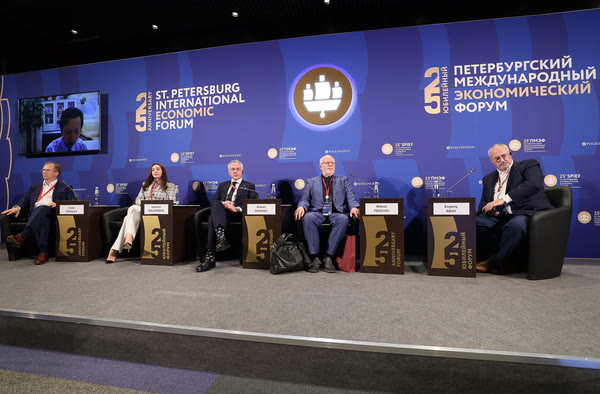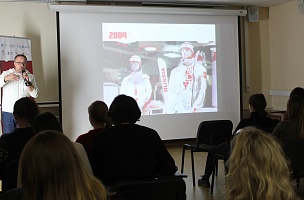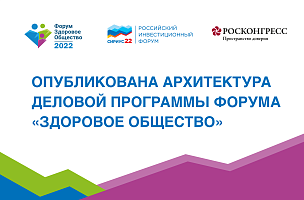Key conclusions
Print and digital media will continue to exist in parallel
“People have been asking when the digital realm will see off print media for 15 years now. But in principle, I would not set paper against the digital sector, because they’re not mutually exclusive. Each one has its own mission to focus on. However, remaining a print-only holding company would not be detrimental to its competitiveness. Komsomolskaya Pravda Media Group offers five kinds of content, and information will be in demand wherever there’s a consumer. And there are consumers of paper content, so we will focus on that,” Angelica Sulhaeva, Commercial Director, Komsomolskaya Pravda Media Group.
“Today, we tell ourselves that our roots are in print media, although we’ve now become a digital company. We continue to operate in print. There’s no question of whether we’ll keep going in the print business. While the business exists, it’ll be a part of what we do. We take a very responsible and active approach to it. And we’re delighted that the next issue of Vokrug Sveta will carry a record number of advertisements. Looking at how the print business is developing, it is our belief that print has a very solid audience. People who buy print editions spend their hard-earned money once a week, once a month – this motivates us very much,” Victor Shkulev, President, Shkulev Media Holding.
“Print media will of course remain as we get to 2030. China is different to other countries – the media is supported by the party, by the state. There are numerous party newspapers, and of course, they will remain,” Rongbin Xie, Deputy Editor-in-Chief, Global Times; Chairman, People.cn.
The rise of online media does not pose a critical threat to print media
“The press possesses qualities which allow us to view it as an enduring product. What is it about reading on paper? Take a moment now to think about how to cook a pasta dish. You find a recipe, but maybe you have to read it again five minutes later. Perhaps you have to jump back a couple of pages. Basically, reading does not involve any other interaction,” Ruslan Novikov, General Director, Argumenty i Facty.
“It’s a great honour for me to speak about the Chinese media, and particularly about newspapers. A report on the state of the Chinese media sector was published a month ago. Media-related income in China is more than CNY 1 trillion. This represents a 11.2% decrease on the previous year. The number of newspapers is declining. Today, there are more than 80 newspapers – 8% fewer than there were in 2019. So, the figures are declining, but not by that much. However, data taken over five years shows a more marked decline. The total circulation of Chinese newspapers is 20 billion. We can see a decline. There are now 96 fewer newspapers than there were five years ago. This is the general situation regarding Chinese newspapers. At the same time, the figures in China increased a bit – by 10%. There are a few different explanations for this growth. For one thing, older people enjoy reading newspapers. This growth is a rare phenomenon, and runs contrary to the general trend. Taken together, Chinese magazines have a total revenue of CNY 2.3 billion. Advertising revenue is CNY 5 billion – a slight decrease. Revenue from radio advertising is also down. A lot of advertisements are moving online – the volume there is growing all the time. Income from advertising is at more than CNY 700 billion. This is in excess of all indicators. These are enormous figures. Looking at figures for newspapers in 2020, 170,000 people were employed in print media. This indicates that the number of employees is going down by 10,000 each year,” Rongbin Xie, Deputy Editor-in-Chief, Global Times; Chairman, People.cn.
“It’s vital to have a grasp of the main trends. Younger people virtually don’t consume paper versions of the press at all, and we should calmly accept that. But we can see the trend regarding life expectancy. People are enjoying many more years in the autumn of their lives. And today, 70-year-olds in Russia are active citizens. Every project has its life cycle. And the trajectory of print’s life cycle still looks good. The press will still exist in the Russian market in 2030. How it will look, and what form it will take is something that remains to be seen,” Victor Shkulev, President, Shkulev Media Holding.
“Paper offers a number of major competitive advantages. In terms of the editorial office, it acts as a school of journalism – it sets the bar for our material. What’s more, it’s about trust in the brand, and employing new technology. In financial terms, the print version accounts for 60% of our income. Newspaper advertising accounts for just 25% of total income, and unfortunately this figure is continuing to decline. We continue to fight for our readers. I have every confidence that newspapers will survive for longer than 30 years. The main enemy of the newspaper is price. A psychological barrier is hit once you get to RUB 50 per copy. That’s why we’re keeping to a price of around RUB 25. That way, we can keep our readers. Our audience is of course made up of the 60+ demographic, and each year, it becomes harder for them to find money to buy a newspaper,” Yuri Tarantsov, General Director, Free Press Publishing House.
“The main problem is reaching the audience. If you have a print and electronic version of a publication, then you have a greater reach. Print versions of the press are undoubtedly here to stay – they’re not going anywhere. It takes more time to read a newspaper, and this time is well spent – the reader properly consumes the information. Newspapers are first and foremost about content, not paper. I agree with those who say that newspapers need to have specific content. Another question is how the press distribution system will operate in the future. In all likelihood, it will have to be completely overhauled. Perhaps newspaper kiosks will offer print-on-demand services,” Mikhail Fedotov, Director, UNESCO Chair in Copyright, Related, Cultural and Information Rights International Scientific and Educational Center, National Research University Higher School of Economics.
PROBLEMS
A lack of material resources
“Our problems have nothing to do with our audience. Our problems are different. Our kiosks are closing and the postal service is not making deliveries on time. These are our problems. What’s more, paper is becoming more expensive, and we don’t have printing equipment. How can one say that this format is on the wane if we have 6 million-plus people reading the newspaper? For us, just like for everyone, this is a business, and we know how to make money from it,” Ruslan Novikov, General Director, Argumenty i Facty.
“Looking at the newspaper business, we can see that over the past 30 years, circulation has been in decline. Before 1989 there were newspapers in Bulgaria which had a circulation of a million. However, in recent years we have seen the fallout of the economic crisis, which also affected the newspaper business. It heavily impacted everyone. The number of newspapers increased, but circulation went down. The main reason for this is the business model that publishers have followed in recent years. It all began much earlier, when the internet first appeared. Readers started to get the information they needed online. This migration of readers led to a migration of advertisers. In this way, two crises occurred simultaneously. But we can also say that this is a spur for innovation. The situation made publishers look for new approaches and review pricing. The first thing to happen was that newspaper prices came down. Income from advertising helped bring down the price of newspapers. In practice it turned out that certain newspapers will now be unable to survive without some form of sponsorship. The media may not accurately report on events, and can mislead the reader. There are media outlets which reflect reality, and outlets which let down their readers. The content of newspapers has also changed. The media is playing several new roles. It is no longer informing readers, but entertaining them,” Atanas Panchev, Director, New Civilization Publishing House; Publisher, Quantovy Prehod Newspaper.
A disparity in traffic between aggregators and websites of individual outlets
“As a media group we have around 85 businesses. In a month, we get more than 500 million page views. Of course, this content is distributed across various channels. These include aggregators and messenger apps. The current formula is already pretty good. We provide the content, and search engines and aggregators provide the traffic. However, our running costs are quite high. And the way things are distributed in this structure does not yet work in our favour,” Victor Shkulev, President, Shkulev Media Holding.
“I would like to touch upon the media’s dependence on online platforms. They are monopolies, and we only find out about changes to the rules post-factum. Around 80% of visits to our websites come from online platforms. There is only one solution – to join forces and negotiate with these platforms at a governmental level,” Angelica Sulhaeva, Commercial Director, Komsomolskaya Pravda Media Group.
“As a media outlet, we are geared towards producing content, and we need to make money from it. The algorithms are constantly changing. Traffic from social media is going down, and audiences are staying within social media platforms. What makes our content different from music, or films? Why don’t we pay for content? If aggregators and social media sites make money from it, then they should pay for the content,” Ruslan Novikov, General Director, Argumenty i Facty.
SOLUTIONS
Finding alternative sources of income
“Our experiment with paid-for content has been going on for more than three years now. One thousand nine hundred and seven subscribers have paid to access the newspaper. We didn’t make much money, but personally, I don’t see any other solution, or any light at the end of the tunnel. We need to go our own way. Perhaps we’re like blind kittens at the moment – bumping into various corners. When we began our experiment, we didn’t see any resistance from our readers. A very close relationship between the newspaper and its readership developed. Because people registered with their mobile phones, we have the ability to communicate with them. We developed a statistical system. Each journalist gets a 50% share of subscriptions made as a result of their material. There is room for this project to grow in Russia. People are already used to paying for films and music. We just need to wait for our media moguls to start moving in this direction too,” Yuri Tarantsov, General Director, Free Press Publishing House.
“The print version of the press of course remains a profitable business for those who are already well-versed in it. However, many publishers are now tackling two problems at once in this regard. First, they’re trying to reduce production costs for this printed product. And second, they’re trying to make up for declining revenues resulting from a smaller circulation. There are two aspects to reducing costs. Publishers are outsourcing the actual printing, and are using various technologies to automate things like typesetting. The second aspect – making up for declining revenues – is being addressed by most high-quality publishers around the world by putting up paywalls,” Vsevolod Pulya, Editor-in-Chief, Russia Beyond the Headlines; Co-Founder, MediaToolbox.
Focusing on targeted advertising in print publications
“Another aspect is that paper is still in demand. And it’s a great tool for building and reinforcing a brand – it creates a specific image. If someone is mentioned in a newspaper or magazine, that carries clout. In these turbulent times, newspapers are becoming increasingly relevant. A physical newspaper has a calming effect on a person. They can take a seat, get away from today’s information overload, and not get distracted by a second screen and push notifications,” Angelica Sulhaeva, Commercial Director, Komsomolskaya Pravda Media Group.
“Print offers an unparalleled advertising opportunity. How many digital adverts do we see on-screen? We don’t even notice them anymore. What does reading mean? You open up a page, and see it in its entirety. For us, this is business. Advertising in print gives us 50% of our revenue. On top of this, there are additional print runs – that also translates into revenue. Two thirds of our total revenue comes from print advertising. Reading is the most valuable information channel,” Ruslan Novikov, General Director, Argumenty i Facty.
Setting out new forms of government support in legislation for the media industry
“The government is interested in capturing the largest possible audience. The Russian Constitution says that we have a welfare state. That means the government must support the media as an industry. This is particularly true of local media outlets. The question is how to help the print sector. A law covering government support for the media and book publishing industry was adopted in 1995. Unfortunately, in 2004 this law ceased to apply due to the introduction of a law covering the monetization of benefits. The possibility of returning to this law has been repeatedly raised. Let’s think about this. Perhaps by working together, we will be able to revive this area of legislation,” Mikhail Fedotov, Director, UNESCO Chair in Copyright, Related, Cultural and Information Rights International Scientific and Educational Center, National Research University Higher School of Economics.
“Producers of content should strike an agreement with news aggregators. They need to enter into talks and find a solution which is acceptable to all sides. Nothing good will come out of the government imposing a solution. That’s because publishers will lobby for one solution, online aggregators will lobby for another, and we’ll end up with the solution proposed by whoever has the most lobbying resources. This doesn’t need to be done through legislation. It needs to be done through interaction between the professional communities involved. They need to agree on the rules of the game, and then they can go to the government with a proposal to add something to the Civil Code. That way, we’ll have the right solution, and it will work,” Mikhail Fedotov, Director, UNESCO Chair in Copyright, Related, Cultural and Information Rights International Scientific and Educational Center, National Research University Higher School of Economics.






